Understanding Liquid Staking Derivatives: A New Dawn in DeFi

Cryptocurrencies, Technology
The financial world is constantly evolving, with emerging technologies like blockchain and cryptocurrencies reshaping the landscape. Among the most exciting developments in this space is the creation of decentralized finance, or DeFi, which offers users an alternative to traditional banking and financial systems. Today, we're going to delve into one of the more recent and potentially impactful innovations within DeFi: Liquid Staking Derivatives.
What are Liquid Staking Derivatives?
To fully comprehend Liquid Staking Derivatives, let's break it down into its two main components: staking and derivatives.
Staking is a process employed in Proof-of-Stake (PoS) and its variations, where users participate in the network's operation and earn rewards by locking up, or 'staking,' their cryptocurrency. However, staking can be illiquid. The staked assets are often locked for a specified period, making them unavailable for other uses.
Derivatives, in a financial context, are contracts that derive their value from an underlying asset or group of assets. They are used for various purposes, including hedging against price movements, gaining access to otherwise hard-to-trade assets, and leveraging positions for greater profits.
In DeFi, a Liquid Staking Derivative represents a tokenized claim on staked assets. When a user stakes their cryptocurrency, they receive a derivative token in return. This derivative can be freely traded, providing liquidity that the original staked asset lacked.

The Significance of Liquid Staking Derivatives
Liquid Staking Derivatives solve one of the primary issues related to staking in a PoS system: illiquidity. The freedom to trade these derivatives allows stakers to retain some liquidity while still participating in the network's consensus and earning staking rewards.
For instance, Alice stakes 10 Ether (ETH) on the Ethereum network and receives a derivative token, say 'stETH,' representing her staked ETH. She can trade, sell, or use her stETH in other DeFi protocols while still earning staking rewards from her original ETH.
This mechanism also opens up exciting possibilities for DeFi as a whole. Staking derivatives can be integrated into existing DeFi protocols, used as collateral for loans, or even incorporated into yield farming strategies.
Potential Risks and Challenges
Despite the promising benefits, Liquid Staking Derivatives are not without potential risks and challenges. One of the primary concerns is the risk of over-leveraging. The ease of trading these derivatives might lead users to take on positions that are riskier than what they might otherwise have done.
Moreover, staking derivatives introduce additional complexity into the DeFi ecosystem. They require robust and secure smart contract infrastructure to ensure they accurately represent the underlying staked assets and their rewards. This complexity might expose new attack vectors for malicious actors, emphasizing the need for thorough audits and security measures.
Lastly, regulatory uncertainty remains a significant challenge. As with many areas in the crypto space, the legal status and regulatory framework for staking derivatives are yet to be clearly defined, which could impact their adoption and development.
The Future of Liquid Staking Derivatives
Liquid Staking Derivatives have the potential to further unlock the value trapped in staked assets, significantly enhancing the liquidity and capital efficiency within the DeFi space. As more PoS protocols emerge, the demand for such solutions will likely increase.
In the end, like many innovations in the DeFi space, the success of Liquid Staking Derivatives will depend on a careful balance of innovation, risk management, and regulatory compliance. The promise is certainly there, and it will be fascinating to see how this space evolves in the coming years.



